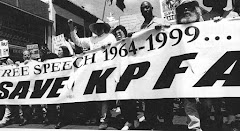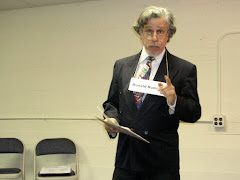At noon we waited for the electricity, watching the bare light bulb for a sign. In the afternoon we drank rum and listened to reggae music. After the lights went out again at five we picked out nodes of brightness – hotels, hospitals, the palace, the “Vive Duvalier President a Vie” neon sign downtown.
I’d made a deal to crash at Herve’s house. He was renovating an old ruin along the Rue Pan Americaine, gradually turning it into an art gallery. He was doing all right but needed the cash and had an extended family to support. At 28 Herve was well-traveled, attractive, optimistic and occasionally a bit outrageous. He called himself a “tastemaker.” His gallery was certainly tasteful enough – quality paintings, ironwork and pottery. Artists and intellectuals gravitated to his scene, a nice home plus rum and evenings of bright conversation about change.
In some ways Herve reminded me of an old Bennington friend, the determination, artistic vision, energy and stubbornness, fired by a deep desire to create a cultural movement. Herve’s politics were a bit naïve for my taste – cultural revolution through art – but his desire to improve life in Haiti was compelling and absolutely sincere.
Each day we’d do errands in his Lancer, pickups at the day care center, food buying and visits to the Centre D’Art, speeding through places, classes and moods. On the car radio the announcer would talk about power rationing for the day. One area we visited was called Brooklyn. Why? I asked. “Because it is so bad,” he said, “nothing for the people.” Yet not as bad as some places, he quickly added. At least Brooklyn was near water and had some open space. True enough, but there were absolutely no trees.
The scene contrasted starkly with the lifestyle of the elite, especially places like San Souci. My first impression upon entering the place was “wow,” more white people than I’ve seen in a week. We had come to take in some “folkloric” dancing – AKA phony voodoo – in the hotel nightclub. Before long a white-suited black man worked his way toward us through the crowd, laughing effusively all the way.
This was Aubelan Jolicoeur, gossip columnist, one-time Minister of Culture, recently fired as Minister of Tourism. To young Haitians he was a fool, a caricature and maybe an informer. To people in search of the “bourgeois welcome,” however, he was “Mister Haiti.” He stopped by our table, made the required small talk, then took his hustle elsewhere.
Despite a recent loss of status Jolicoeur still had contacts with the hotels and in the art world. The backstory was provided by Ira, a Johns Hopkins doctoral student studying in the countryside. He’d come to the city for a monthly visit. After an 82 cent dinner and some cheap rum he was at San Souci to reaffirm his anger.
Ira was obsessed with the contrast of privilege and poverty. Habitation LeClerc, originally built for Napoleon’s sister and now a jet set haven, was located in the midst of an incredible slum, he pointed out, yet its guests never saw the reality on the other side of the resort’s high walls. “Those are very rich people,” he said, “people who don’t have to be on business trips to be here.”
The tourists moved to poolside to watch the on-stage show, a collection of three dances with flute and drum interludes. As the lights came up six performers charged on stage wearing tinseled costumes that absurdly exaggerated Latin style. During Act One – a “fertility” dance – two women let their halters drop. “This reinforces every racist stereotype people have,” Ira said.
As the dance continued the two darker women left the stage, leaving a half-nude, light-skinned beauty and one man to complete the “ritual.” Ira snapped, “The white bitch stays! Do you really think that black men have bigger pricks and black women like to screw? Maybe we’ll get some progressive nudity.”
We didn’t. Instead, after a flute solo the rest of the dancers returned for Act Two as “peasants,” barefoot and laughing in colorful hats. “In the city they have a Loa called Uncle Zaca, who doesn’t exist in the country,” Ira said. “He’s the Loa of the country people, a stooge. That’s how he’s portrayed. Look at those dancers, laughing like peasants. Ridiculous. And barefoot. An anthropologist once went into the countryside to see a Voodoo ceremony. He was very surprised to see people wearing shoes. ‘I didn’t know peasants wore shoes during ceremonies,’ he said. And I said, ‘When they can get shoes they like to wear them.’”
The “peasant” dance, basically rural folk leaping around with baskets, was ludicrous. But Act Three exceeded it in grotesque exaggeration. It began with eight dancers, all wearing red. One guy brandished flaming sticks to the sound of insistent drumming. The women circled while exchanging mock-possession shouts.
Suddenly, a dancer jumped into the pool, screaming, moaning and writhing. This brought the audience to its feet. The MC and choreographer “tried” to pull her out and off stage. But she crawled back, as if involuntarily drawn to the guy with the flaming sticks, a stand-in for the fire god.
A second dancer fell to the ground, flipping like a beached fish. Then a third. They crawled around as the “fire god” danced above them, flicking sparks from the torches. The orchestrated frenzy reached its final crescendo and then abruptly ended. The males carried the women off, still “possessed.”
“There you have it,” quipped Ira. “Three’s the magic number.”
Before we left I asked him to define his rage. The city elite lived in luxury, surrounded by intolerable conditions, he said. Child mortality ran high, people were starving, and the middle class was practically non-existent. The San Souci show was a classic display of what was wrong with Haiti – blacks distorting their own culture and then changing into Gucci to go home, whites watching absurd caricatures they took for reality. “But you can’t feel pity,” he added, “because these people know what’s going on and have a lot going for them despite their poverty. So the only response that seems to work is anger.”
“But when you’re angry you usually feel compelled to act,” I said. “It you don’t it becomes frustrating.” He agreed but had no answer, just two more years in Haiti to figure it out.
As the days drifted by the crisis became the norm. Rich Haitians drilled wells while the poor broke water lines with machetes to fill their buckets. The government issued warnings about the need to conserve, but in the wealthy enclaves people still washed their cars. Drought and famine swept the countryside as experts cautioned about impending catastrophe. The forests had been destroyed to produce charcoal, the only fuel most people could afford. But unchecked soil erosion was underway. Forest devastation was altering the climate; the land was getting hotter and retaining less water as the water table fell.
“The environment is shot,” one local expert concluded. “We are beginning to see the effects of galloping devastation.” A radio commentator had his own analysis” “God is not the problem. The problem is man.” This sounded true. Not much was left of Haiti that hadn’t been either destroyed by war and poverty or purchased by investors. Words like independence and human rights sounded empty in the face of ecologically ruin and a greedy, corrupt and potentially brutal regime. The country’s capacity to recover looked fatally damaged.
As a temporary escape from bleak reality we took in a movie. Actually, it was the first Haitian feature film ever produced. Shot with one camera and amateur actors, Olivia was a theatrical disaster. But movies were a popular pastime in Port-au-Prince, and the audience was oblivious to the pabulum plot about a country girl trying to make it in the city. She ended up having an illegitimate kid and finding a rich boy friend. It was a storybook Haiti that didn’t exist, but one the crowd in the theater preferred to crumbling real life.
Chapter Twelve of Prelude to a Revolution
Previous Chapters:
Hard Times in Duvalier's Haiti
Baby Doc's Haiti: Low Expectations
More on Haiti: Lambi Fund
Next week: Media Alternatives
 MUCKRAKING MEDIA CONSPIRACY CIA TERRORISM RIGHTS FBI
MUCKRAKING MEDIA CONSPIRACY CIA TERRORISM RIGHTS FBI







































